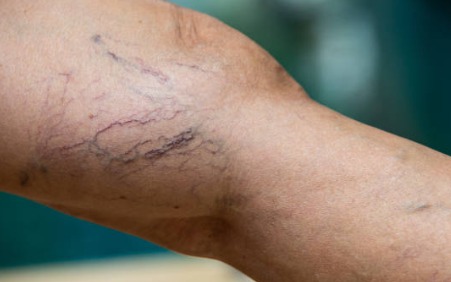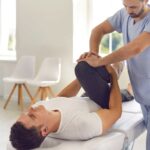Varicose veins are a common condition that affects individuals across various age groups. These enlarged, twisted veins are most frequently seen in the legs and have long been associated with discomfort and aesthetic concerns. Identifying and addressing these veins in their early stages can help prevent the condition from worsening and allow for better management options later on.
What Are Varicose Veins?
Varicose veins are veins that become swollen and enlarged due to the malfunctioning of vein valves, which are responsible for regulating blood flow to the heart. These improperly functioning valves can lead to blood pooling in the veins, causing them to become engorged and visibly twisted. They commonly occur in the legs because standing and walking increase the pressure on the veins in the lower body. While some individuals may experience only mild symptoms, others may find them uncomfortable. Common causes include prolonged standing or sitting, genetics, obesity, hormonal changes, and aging. These factors can weaken the veins and lead to their gradual dilation over time.
How Can They Be Recognized Early?
The early identification of varicose veins often begins with understanding the signs and symptoms associated with the condition. Individuals may notice physical changes or experience discomfort before the veins become significantly visible. Common physical changes and symptoms include:
- Veins that appear blue or dark purple beneath the skin.
- The development of bulging, rope-like veins, usually on the legs or feet.
- Swelling in the lower legs or ankles.
- A sensation of heaviness or aching in the legs.
- The presence of itching or irritation around the veins.
How Are They Managed?
Even though varicose veins can present a range of challenges, various management approaches are available. The different strategies tend to be tailored to the severity of the condition. These methods aim to alleviate discomfort and improve overall vein health.
Lifestyle Adjustments
Elevating the legs when resting may also help reduce swelling and discomfort. Compression stockings are another effective tool often recommended, as they apply sustained pressure to the legs. This helps to improve blood flow and reduce swelling.
Medical Interventions
At-home management may not provide results that some find fully satisfactory. For individuals seeking further treatment, medical procedures may be explored. Some of the most common medical approaches include the following methods:
- Sclerotherapy involves injecting a solution into the veins that causes them to collapse. Over time, they fade from view.
- Laser treatments use focused energy to close small varicose veins.
The selection of treatment depends on the severity of the condition, individual preferences, and the recommendations made by a healthcare specialist.
Meeting a Vein Specialist for Treatment
Scheduling a consultation with a vein specialist can provide valuable insights into the severity of the condition and the possible management options. The specialist may perform physical examinations and recommend treatments based on individual health conditions and symptoms. If varicose veins have been causing discomfort, seeking professional guidance can lead to effective solutions that improve not only physical health but also quality of life. By addressing early signs of these veins and exploring management options, individuals can take meaningful steps toward improved vein health.









Leave a Reply